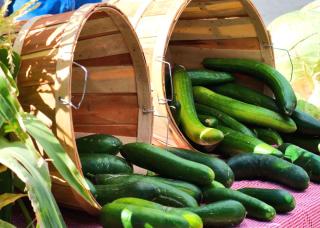

Summer is there and the garden has settled in! The month of July gifts us a multitude of colors, tastes and fragrances as we go about gardening.
The long hours we spend relaxing in the greenery mustn’t let us forget that a few gardening tasks are needed to keep enhancing this pleasurable pastime.
Watering, weeding, pruning, harvesting, cleaning up or running the hoe along the vegetable patch are short, regular chores that will turn your garden into the nicest spot of your house during the summer.
<!–
–>
Without a doubt, flowers are the plants that will most suffer heat. The stuffy, sometimes stormy weather doesn’t often bring rain.
Flowers need water and it’s important to give them the amount they need or they’ll disappear from your flower beds.
Before that, though, run the hoe or cultivator along the soil to ensure the water penetrates right from the first raindrops or watering can.
Divide your perennials for the species that have born flowers in spring to propagate them.
It’s the best way to get new flowers, at the same time rejuvenating the plants that you’re dividing.
Usually, splitting the clumps every 2 or 3 years is best practice, which means it’s better to not divide the plants you’ve planted this year.
Regarding shrubs planted this year, especially those planted in spring, water often because the first year is when they need it most.
Just as you’ve done for flowers, clean the soil and scratch it up to ensure that every rain drop that falls seeps in.
It’s the right time to pruning your determinate roses, those that only bloom once a year.
Also eliminate young stems that appear from the soil or from the stock of the rose tree, these are called suckers because they drain the shrub’s energy.
Keep watering your roses regularly without wetting any leaves, this is the best way to avoid having certain diseases appear, like powdery mildew.
Cherry tree – Time to harvest those red cherries for most varieties!
Pear tree, apple tree, peach tree – Reach for your pruning shears and perform a fruit-inducing pruning.
It’s also possible to remove some leaves that might be casting too much shade on the fruits, they need sun to ripen best.
Lastly, treat against fruit fly to avoid your pears and apples being devoured by the voracious codling moth…
Pruning grapevine – Prize grapes only come at the cost of a little more effort
Still time to sow some vegetables directly in the ground, for example:
 You may also sow zucchini seeds in nursery pots that you can transfer to the ground at the end of the month or at the beginning of August.
You may also sow zucchini seeds in nursery pots that you can transfer to the ground at the end of the month or at the beginning of August.
As for the rest, stay on top of the weeding and watering for those plants that need it most, carefully watering in the evening without getting the foliage wet because it would invite diseases in.
Treatment-wise, it’s important to treat turnip and cabbage against both flea beetle and cabbage moth.
<!–
–>
If your lawn starts turning yellow, no need to water. This would consume a lot of water which is like wasting this precious resource that makes our planet blue.
A mild summer afternoon is perfect to soap up and hose down cherished garden ornaments and resin garden furniture sets. They’ll be sparkling in the sun and ready to welcome you for an evening stroll.
Remember to take a moment to sit back and relax on a bench to admire your growing oasis!